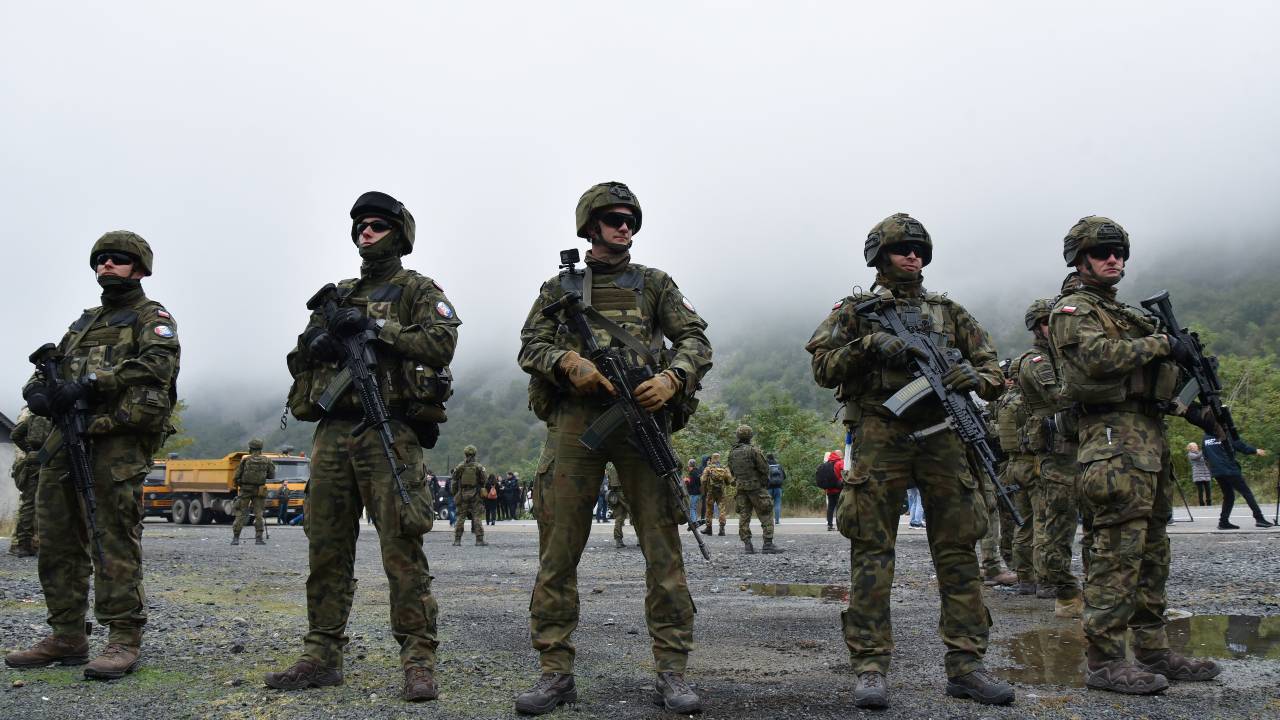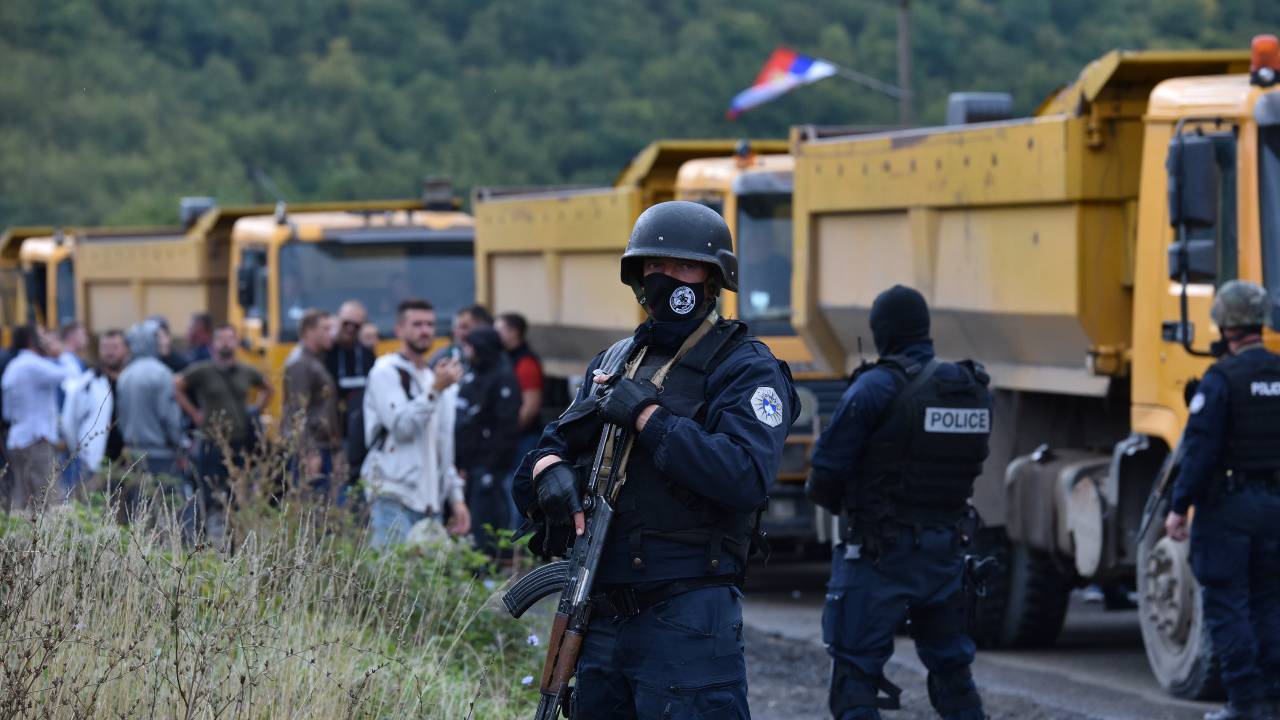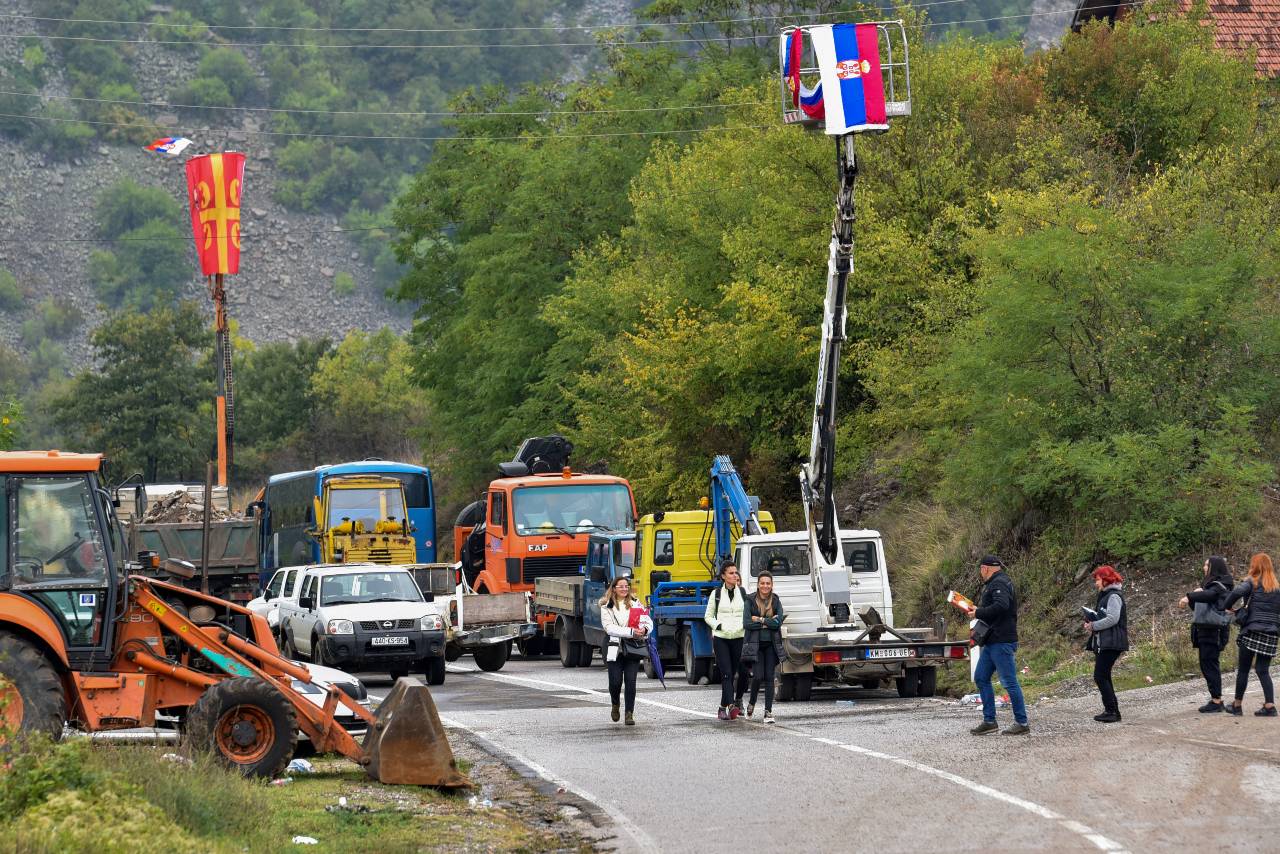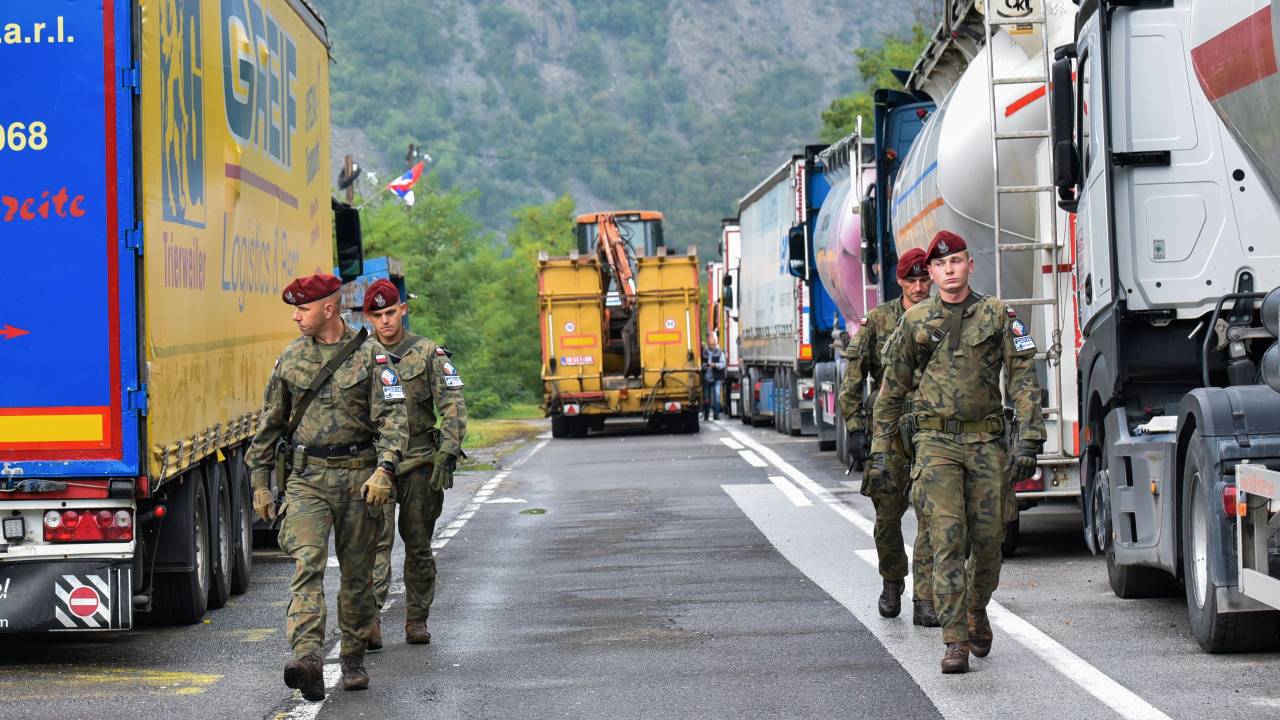
Members of the KFOR peacekeeping force patrol the area near the border crossing between Kosovo and Serbia in Jarinje. /Laura Hasani/Reuters
Members of the KFOR peacekeeping force patrol the area near the border crossing between Kosovo and Serbia in Jarinje. /Laura Hasani/Reuters
Serbians removed a blockade of trucks and cars at the border with Kosovo on Saturday as NATO troops took control of the area under an EU-mediated deal, ending a tense stand-off between the two administrations over car license plates.
Kosovo special police were also expected to withdraw from the border area nearly two weeks after Serbians first blocked the roads, a reaction to Pristina's introduction of a new rule requiring Serbian license plates to be removed or hidden from cars entering Kosovo.

Kosovo special police patrol as hundreds of Kosovo Serbs protest against a government ban on entry of vehicles with Serbian registration plates on September 20. /Laura Hasani/Reuters
Kosovo special police patrol as hundreds of Kosovo Serbs protest against a government ban on entry of vehicles with Serbian registration plates on September 20. /Laura Hasani/Reuters
The two sides agreed in EU-mediated talks to allow free traffic back in 2014. However, Kosovo officials said the deal had expired and from September 20, started to enforce the rule that only Kosovo-issued license plates were now valid in the territory.
Those with Serbian plates would instead have to use non-permanent printed 60-day registration details.
Kosovo officials said the decision was a direct response to Serbian measures taken against drivers from Kosovo since 2008, when it declared independence from Serbia.
Serbia does not recognize Kosovo's independence, nor its authority to take certain state actions, such as registering cars. Therefore, its police have for years been taking off registration plates from Kosovo-registered cars entering Serbia.

Serbs blocked roads in Kosovo in protest over the license plate restrictions. /Laura Hasani/Reuters
Serbs blocked roads in Kosovo in protest over the license plate restrictions. /Laura Hasani/Reuters
This week, tensions peaked in the area as both Serbia and the NATO-led multinational Kosovo Force significantly increased their military operations.
While there were no military engagements, there were attacks on a local vehicle registration office and other Kosovo Interior Ministry buildings in Serb-majority northern Kosovo.
But on Thursday the stand-off came to a short-term conclusion when the two countries struck the deal, mediated by EU special envoy Miroslav Lajcak. Belgrade and Pristina agreed both to using stickers on license plates to cover state symbols, and allowing NATO, which has some 3,000 troops in Kosovo, to control the border area.

Polish soldiers, part of the peacekeeping mission in Kosovo, KFOR, move through barricades near the border crossing in Jarinje, Kosovo. /Laura Hasani/Reuters
Polish soldiers, part of the peacekeeping mission in Kosovo, KFOR, move through barricades near the border crossing in Jarinje, Kosovo. /Laura Hasani/Reuters
With the deadline for their withdrawal at 4 p.m. on Saturday local time, Serbians removed the barricades as NATO soldiers started to replace Kosovo police vehicles at the crossing.
Kosovo's sovereignty remains disputed, with many nations not recognizing it – including the G20 countries Argentina, Brazil, China, India, Indonesia, Mexico, Russia and South Africa.
But with Serbia seeking EU membership, being flexible on its outstanding issues with Kosovo will be key for Belgrade in the coming years.
Source(s): Reuters
,AP

